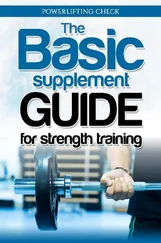That’s why it’s important to set S.M.A.R.T. goals.
That means your goals should be
✓ Specific—Maybe your goal is to improve your balance, but what does that actually look like? Being able to stand on one foot while putting on your socks? Maybe it means feeling more confident when you’re walking down the stairs. Be specific about exactly what you want to achieve.
✓ Measurable—The next important part of setting goals is making sure you can measure them. If you want to lose weight, you can measure that on a scale, but what if you want some other goal that isn’t so cut and dried? Maybe a good goal would be doing a certain number of workouts a week, which you can easily measure.
✓ Attainable—It’s great to have long-term goals, but think of the short-term. What can you actually do right now? Maybe you’d like to work out five days a week, but a more achievable goal might be two or three days a week to start. Maybe your goal is even one workout a week. The more successful you are, the more you’ll stick to your goals.
✓ Relevant—This is related to setting specific goals in that you want this to be something that matters to you right now. Maybe losing weight is a goal, but what you really need to focus on is feeling stronger and more independent. Set a goal that means improving your life.
✓ Time-bound—The last aspect of setting goals is to have some kind of timeline to achieve it. This program gives you twelve weeks of strength training workouts, so that’s a great timeline to start off with.
Setting goals that are too vague (i.e., I’ll walk twice this week) are easy to put off. But, if you decide you’re going to walk on Mondays and Wednesdays at 8:30 a.m. at the local mall, it’s much easier to stick to it.
TRACKING YOUR PROGRESS
The only way to know if you’re actually getting somewhere with your exercise program is to regularly track your progress. You can easily make your own workout log by simply writing down the exercises each week and noting how much weight you use each time and how each exercise feels.
You can record your workouts, weights used, etc. but you can also track things in other ways.
A simple calendar on the wall can give you a visual of your progress. By marking off the days you work out, you can see how you’re doing and if you’re showing up for your workouts on a consistent basis.
Keeping a basic health and fitness journal can also help. For example, if you miss some workouts, you can figure out what went wrong, if anything, and you can keep a general record of how you’re feeling and doing. It may be you missed a workout because you were sore, which might mean you need more recovery time.
You can find a variety of free fitness tracking worksheets to download on the Internet, or just keep a pad and pen handy whenever you work out.
There are also online and smartphone tools to help you track your progress, many of which are free. One is My Fitness Pal, https://www.myfitnesspal.com/, which is free and allows you to track everything from your computer or smartphone app. You can track your diet, exercise, nutrients, and you can even scan barcodes of food to find the nutrient content of different foods.
FitWatch, https://www.fitwatch.com/, is another free website where you can find trackers, calculators, and much more about health and fitness.
Choose a system that works for you and make it a habit to log what you’re doing on a daily basis. Seeing and appreciating your progress is a powerful thing.
FALLING OFF THE WAGON—NOW WHAT?
It’s inevitable that life will happen, and sometimes that interferes with your workouts. There are a variety of things that happen to throw us off track, many of them unexpected.
✓ An illness
✓ An injury
✓ A life change such as changing jobs, getting married, losing someone close to us
✓ Moving
✓ Time or family commitments
✓ The weather
✓ Boredom
✓ Fatigue
The list goes on, and it’s important to recognize that this is normal and to be realistic about what you can and can’t do. We can’t be perfect all the time, but the key is to get back to your workouts as soon as you can.
Even taking just one small action can get you back into your exercise groove. Try simple things like taking walks, doing the warm-up exercises instead of an entire workout, or taking a few extra stairs throughout the day.
We all get off track for one reason or another, but there’s no reason you can’t get back on track. You just have to do one positive thing in that direction and you’ll find your momentum again.
ADVICE ON CHOOSING YOUR WEIGHTS
While I offer suggestions for the amount of weight to use for different exercises, it’s important to know that what you use is different for everyone.
Experts typically use a percentage of your one repetition maximum, meaning you lift as much as you can for one repetition of an exercise, say a biceps curl, and then use a percentage of that to figure out how much weight you need for more reps.
For most of us, lifting a very heavy weight one time isn’t safe or feasible. It’s much better to choose a weight to lift for the suggested repetitions and then pay attention to your body’s signals.
Let’s say you’re doing an exercise for ten repetitions, which is typical of many exercises. If you get to the tenth repetition and you feel like you could do a lot more, that’s a good sign you could go heavier.
If you can’t finish all the repetitions without losing your form, that means you may need to go down in weight.
Keep in mind that every day is different. Some days you’re feeling energetic and may be able to do more and other days maybe not.
Your tracking forms can help you keep track of the weights you’re using and how they feel to you.
One other thing to think about is that, if you’re a beginner, you’re going to get results with just about any amount of resistance. Any new challenge you add to your body will stimulate that muscle growth, especially if you’re just starting out.
It’s much better to focus on your form and doing the exercises correctly than it is to worry about how much weight you’re lifting.
DELAYED ONSET MUSCLE SORENESS (DOMS) AND REST DAYS
One other important aspect to consider is soreness. It’s very normal to get sore after doing any new activity, including exercise and strength training.
This program is designed to ease you into strength training so that you can progress gradually, which can help with soreness. However, some stiffness should be expected. The only way our muscles grow is when we give them more than they can handle.
When we do that, our muscles respond by adapting and growing more muscle fibers. That’s part of the delayed onset muscle soreness (DOMS) we often experience within two or three days after a new activity.
Think of when you first do yard work after a long season and how your body feels the next day. Anything you haven’t done in a while has the potential to leave you sore and tired, and the same can be true of resistance training.
SYMPTOMS OF DOMS
✓ Your muscles may feel tender to the touch
✓ You may feel stiffness and soreness when you move, especially after you’ve been sitting for a while
✓ Some swelling in the muscles
✓ Muscle fatigue
It’s normal to feel some burning while doing the exercises, which is a sign your muscles are working. That should go away when you finish the exercise. DOMS is different in that it usually takes about twelve hours before it shows up, although many people find that forty-eight hours after the workout is the most painful.
Читать дальше












